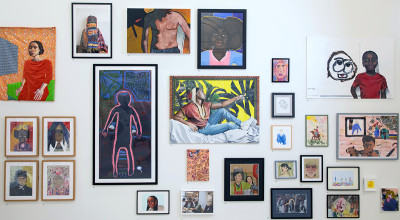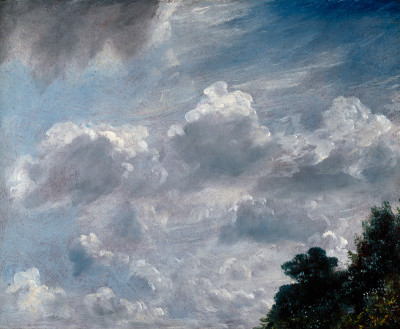Community Art Club: forging a connection
Community Art Club: forging a connection
By Becky Jelly and Anna Nunhofer
Published 20 June 2014
For many homeless and marginalised people, art-making can seem a closed-off world. Our learning team tell us how the RA is trying to change that.
-
Set in the heart of Mayfair; housed in a 17th-century town-palace; a closed shop of privileged artists. Sometimes the RA can look – to an outsider – like a stalwart of the artistic establishment. Over the years, though, we have formed many partnerships with community groups and hard-to-reach audiences, including a special programme of workshops and exhibition visits for homeless, vulnerable and marginalised people.
One of our regular monthly events is an Art Club, which we have been running for almost a year. A core group of people attend regularly, but we also welcome new members who come from local centres, such as St Mungo’s Broadway, The Connection at St-Martin-in-the-Fields and the Seymour Art Collective. Throughout the series of workshops, which differ in topic and content, there is some sense of continuity of themes and ideas – like keeping a sketchbook.
-
We keep each session fresh by taking inspiration from artworks in current RA exhibitions, or from our own rich art collection. Our recent workshops have been influenced by the exhibition Renaissance Impressions, where participants experimented with different printmaking techniques. On other occasions, we have sculpted clay caricatures, painted landscapes and built architectural structures from mixed media. A session on making our own artists’ sketchbooks was inspired by sketchbooks belonging to past Royal Academicians, which we pored over in the RA Library.
-
The programme came about in 2013 because of an introduction to the Broadway Centre made by one of our sponsors. Over the past year, we’ve been delighted and inspired to see how participants grow in confidence from workshop to workshop. With the two of us as consistent workshop leaders, we can witness and be part of this development. Making art is difficult at the best of times, but we think this consistency helps to create a welcoming and safe environment for the group to express themselves in a personal and experimental way. These positive outcomes are evident in the quality of artwork created, as well as the feedback we receive. The centres have responded incredibly well: the workshops are ‘confidence- and aspiration-building stuff,’ we’re told. One of our attendees who has learning issues is painting more often, and has started to enter their work in competitions. Another has sold his work and is now retraining as a tattoo artist.
-
I’ve never done anything like this before, and didn’t realise how much I’d get out of it and I will now carry on making.
A participant in one of our workshops
-

One of the works created in our workshop

A portrait inspired by the sketches of a past Royal Academician

Working from the sketches of a past RA
-
In many ways, the social aspect of the Art Club is equally as important as the art making. Homeless people from different centres come together to discuss their artwork with others and share their opinions. More than teaching, it’s a unique life experience. Talking about art with the participants helps them to feel valued, accepted and included. It allows them to build the confidence to increase their social activity. We were really pleased to hear that an attendee who came to the first ever workshop we ran is now working again as a graphic artist.
Art can transport you. One of our artists (who would prefer to remain anonymous) was going through a very stressful time last year with his housing situation, as well as facing a difficult court case. He attended the Summer Exhibition as part of one of our workshops, saying it was the most relaxed he has been for months. Another participant – an asylum seeker who spoke little English – hadn’t painted since childhood. He produced amazing works, telling us: “Since I’ve been in this country, this is the first time someone has ever shown me such things inside a gallery”.
The support – both practical and emotional – that many artists can expect from their partners, families and peer groups can often be difficult to come by for our artists. That’s why it’s a pleasure to run the Art Club. We hope to continue to do so, and to engage even more people from the homeless community with the RA.
-
On 22 December 2014, the programme was the focus of a discussion on the BBC World Service. Anna Nunhofer, Schools and Communities Co-ordinator at the Royal Academy of Arts, explains how art can inspire marginalised people.








